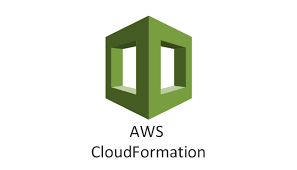Mastering AWS CloudFormation: Simplify Infrastructure as Code
 Jatin Shastri
Jatin Shastri
When managing infrastructure in the cloud, automation is key to efficiency and scalability. AWS CloudFormation is one of the most powerful tools in a DevOps engineer’s arsenal, enabling Infrastructure as Code (IaC) to provision and manage AWS resources in a systematic, repeatable, and secure way.
What is AWS CloudFormation?
AWS CloudFormation is a service that allows you to model, provision, and manage AWS and third-party resources using templates written in JSON or YAML. Instead of manually creating resources, you define your infrastructure requirements in a template, and CloudFormation does the heavy lifting to deploy and manage those resources.
Why Use AWS CloudFormation?
CloudFormation provides several advantages for teams aiming to streamline their infrastructure:
1. Automation and Consistency: Deploy your entire stack consistently without human error.
2. Version Control: Track changes to your infrastructure by storing templates in version-controlled repositories.
3. Cost Management: Use templates to analyze the cost implications of your infrastructure before deployment.
4. Simplified Scaling: Automate the scaling of resources using predefined templates.
Core Concepts of AWS CloudFormation
1. Templates
Templates are the backbone of CloudFormation, defining the resources you need. A typical template includes:
Resources: Specify what to create, such as EC2 instances, S3 buckets, or RDS databases.
Parameters: Allow dynamic input values like instance types or key pairs.
Outputs: Return values, such as an application URL or instance ID.
2. Stacks
A stack is the collection of resources defined in your template. CloudFormation deploys, updates, or deletes all the resources in a stack together, ensuring integrity and consistency.
3. StackSets
For organizations managing multiple accounts or regions, StackSets allow you to deploy a single CloudFormation template across many AWS accounts and regions simultaneously.
Step-by-Step Guide to AWS CloudFormation
1. Create a Template
Start by writing a YAML or JSON file. Here’s an example to create an S3 bucket:
Resources:
MyS3Bucket:
Type: "AWS::S3::Bucket"
Properties:
BucketName: "my-unique-bucket-name"
2. Validate the Template
Use the AWS Management Console or the AWS CLI to validate your template. For CLI, use:
aws cloudformation validate-template --template-body file://template.yaml
3. Deploy the Stack
Use the validated template to create a stack.
aws cloudformation create-stack --stack-name MyFirstStack --template-body file://template.yaml
4. Update the Stack
When requirements change, update the template and apply changes using:
aws cloudformation update-stack --stack-name MyFirstStack --template-body file://updated-template.yaml
5. Monitor and Troubleshoot
CloudFormation integrates with Amazon CloudWatch to provide logs and metrics, helping you troubleshoot deployment issues.
Best Practices for AWS CloudFormation
Use Nested Stacks: Break large templates into smaller, reusable components for better manageability.
Enable Stack Policies: Protect critical resources from accidental updates during stack changes.
Leverage AWS SAM for Serverless: If you’re working with serverless applications, AWS Serverless Application Model (SAM) simplifies managing Lambda functions and APIs.
Implement Change Sets: Review proposed changes to your stack before applying them to avoid disruptions.
Tag Resources: Use consistent tagging for easier cost management and resource identification.
Common Use Cases for AWS CloudFormation
1. Setting Up Development Environments: Quickly spin up entire environments (e.g., compute, networking, and databases) for developers.
2. Disaster Recovery: Automate infrastructure recovery processes in case of outages.
3. Multi-Region Deployments: Simplify global application rollouts with StackSets.
4. Compliance Automation: Enforce infrastructure configurations that meet compliance requirements.
Conclusion
AWS CloudFormation is a game-changer for managing infrastructure efficiently and securely. By adopting it, teams can focus on innovation while minimizing operational overhead. Whether you’re setting up a single S3 bucket or a multi-region enterprise application, CloudFormation’s power and flexibility make it a must-have tool for any cloud professional.
Start exploring CloudFormation today, and transform how you manage cloud infrastructure!
Subscribe to my newsletter
Read articles from Jatin Shastri directly inside your inbox. Subscribe to the newsletter, and don't miss out.
Written by
